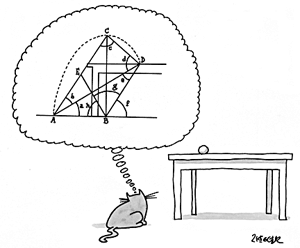
CS 274
Computational Geometry
Jonathan Shewchuk
Autumn 2009
Mondays and Wednesdays, 2:30-4:00 pm
Beginning August 26
320 Soda Hall
Combinatorial geometry: Polygons, polytopes, triangulations, planar and spatial subdivisions. Constructions: triangulations of polygons, convex hulls, intersections of halfspaces, Voronoi diagrams, Delaunay triangulations, arrangements of lines and hyperplanes, Minkowski sums; relationships among them. Geometric duality and polarity. Numerical predicates and constructors. Upper Bound Theorem, Zone Theorem.
Algorithms and analyses: Sweep algorithms, incremental construction, divide-and-conquer algorithms, randomized algorithms, backward analysis, geometric robustness. Construction of triangulations, convex hulls, halfspace intersections, Voronoi diagrams, Delaunay triangulations, arrangements, and Minkowski sums.
Geometric data structures: Doubly-connected edge lists, quad-edges, face lattices, trapezoidal maps, conflict graphs, history DAGs, spatial search trees (a.k.a. range search), binary space partitions, quadtrees and octrees, visibility graphs.
Applications: Line segment intersection and overlay of subdivisions for cartography and solid modeling. Triangulation for graphics, interpolation, and terrain modeling. Nearest neighbor search, small-dimensional linear programming, database queries, point location queries, windowing queries, discrepancy and sampling in ray tracing, robot motion planning.

 For October 7, I will hand out
For October 7, I will hand out

 (Radiolarian Color Painting.
Ernst
Haeckel, zoologist, 1834–1919.)
(Radiolarian Color Painting.
Ernst
Haeckel, zoologist, 1834–1919.)